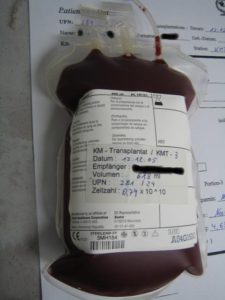“However, hematopoietic stem cell transplantation (HSCT) survivors are at risk of developing long-term complications, such as endocrinopathies, musculoskeletal disorders, cardiopulmonary compromise and subsequent malignancies”
“If I knew then what I know now.” Multiple myeloma therapy can be high-risk. How often have I said that to myself over the years since my hematopoietic stem cell transplantation (ASCT aka stem cell transplant) in December of 1995. While HSCT therapy has improved since I had mine, this therapy is still aggressive, toxic therapy.

Improved but still does NOT increase your overall survival (OS). Don’t take my word for it, ask your oncologist.
I should know. I live with
- chemobrain,
- chemotherapy-induced heart damage,
- increased risk of treatment-related secondary cancer
- and chemotherapy-induced nerve damage
all as a result of my HSCT. And all of these side effects occurred months or years after my ASCT.
I believe that it is critical to learn as much as you can about the different types of HSCTs (allo, auto, and umbilical cord blood) in order to better understand the risks and rewards of this procedure. Knowledge is power as they say.
Please understand that there are a number of evidence-based, non-toxic therapies to either reduce or eliminate many of the side-effects documented below. The sooner you learn about and implement integrative therapies the sooner you will treat possible long-term and late stage side effects of high dose chemotherapy.
I am both a multiple myeloma survivor and MM cancer coach. To learn more about these therapies, scroll down the page, post a question or comment and I will reply ASAP.
Thank you
David Emerson
- Multiple Myeloma Survivor
- MM Cancer Coach
- Director PeopleBeatingCancer
Recommended Reading:
“However, hematopoietic stem cell transplantation (HSCT) survivors are at risk of developing long-term complications, such as endocrinopathies, musculoskeletal disorders, cardiopulmonary compromise and subsequent malignancies.
These complications have a direct impact on the morbidity and mortality experienced by HSCT survivors.
- Two-thirds of HSCT survivors develop at least one chronic health condition;
- while a fifth develop severe or life-threatening conditions.
- HSCT patients who have survived for at least 5 years post-transplantation are at a fourfold to ninefold increased risk of late mortality for as long as 30 years from HSCT,
- producing an estimated 30% lower life expectancy compared with the general population.”
“The prevalence of autologous and allogeneic hematopoietic cell transplantation (HCT) survivors continues to increase. Among patients whose disease remains in remission for the first 2-5 years after transplantation, it is estimated approximately 80-90% will be alive over the subsequent 10-years.
However, their relative mortality rates continue to remain higher than their general population peers with late complications contributing to significant long-term morbidity and mortality.
Late effects in HCT survivors include:
- secondary cancers,
- organ specific complications,
- late infections,
- quality of life impairments,
- psychosocial issues,
- sexual and fertility concerns,
- financial toxicity and
- issues around return to work/school.
A patient-centric and multidisciplinary approach to HCT survivorship care with collaborative and coordinated care from transplant centers and community healthcare providers is necessary to ensure their long-term health. Lifelong followup of HCT survivors is recommended, with established guidelines serving as the template for providing screening and preventive care based on patient-specific exposures. This review discussed common late complications, models for care delivery, and gaps and priorities for future research in the field of HCT survivorship…




